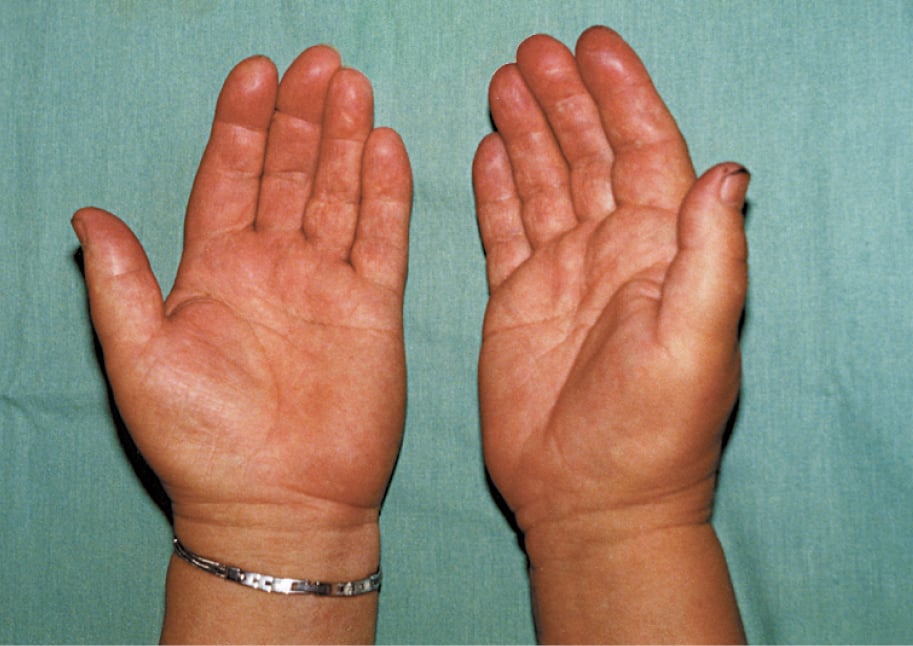Caldito EG, Caldito NG, Kaul S, Piette W, Mehta S. Erythromelalgia. Part II: Differential diagnoses and management. J Am Acad Dermatol. 2024;90(3):465-474. doi:10.1016/j.jaad.2023.02.070
Caldito EG, Kaul S, Caldito NG, Piette W, Mehta S. Erythromelalgia. Part I: Pathogenesis, clinical features, evaluation, and complications. J Am Acad Dermatol. 2024;90(3):453-462. doi:10.1016/j.jaad.2023.02.071
Mann N, King T, Murphy R. Review of primary and secondary erythromelalgia. Clin Exp Dermatol. 2019 Jul;44(5):477-482. doi: 10.1111/ced.13891. Epub 2019 Jan 4. PMID: 30609105.
Definition, Etiology, Clinical FeaturesTop
Erythromelalgia is a descriptive term for erythema and pain in the extremities. It is a vasomotor disorder associated with acute (and sometimes followed by chronic) episodic dilation of the arterioles and arteriovenous connections. It manifests as sudden erythema and warmth of the extremities, particularly fingers and toes (Figure 3.19-1), accompanied by severe burning pain. Involvement of the feet is more common than involvement of the hands. The features are usually symmetric and sometimes also occur on the ears and face. Each episode can last for hours to years.
Causes: Primary erythromelalgia is associated with autosomal dominant mutation of the SCN9A gene, leading to dysfunction of the cellular sodium channels. Secondary erythromelalgia develops in the course of myeloproliferative neoplasms (particularly essential thrombocythemia and polycythemia vera), systemic connective tissue diseases, type 1 or type 2 diabetes mellitus, multiple sclerosis, postural tachycardia syndrome, neuropathy of various etiologies, infectious diseases (eg, AIDS), and peripheral embolism (especially cholesterol emboli). It may also be caused by certain drugs (bromocriptine, nifedipine) or trauma.
DiagnosisTop
Ensuring adequate investigation for hematologic disease, connective tissue disease, and metabolic or neurologic disorders as secondary causes of erythromelalgia is important. When primary erythromelalgia is considered, appropriate genetic testing for mutations in the SCN9A gene is warranted.
TreatmentTop
Symptoms of erythromelalgia may be improved by cooling and elevating the affected extremity and by avoiding high temperatures and strenuous exercise.
Mexiletine, which is licensed as an antiarrhythmic agent targeting sodium channels, has been shown to be effective in some patients with primary erythromelalgia. Pharmacologic treatment includes acetylsalicylic acid (ASA) up to 100 mg/d, indomethacin, propranolol, serotonin reuptake inhibitors (eg, sertraline), and clonazepam. Sympathetic nerve blockade may be helpful in some cases. In patients with severe pain, you may consider IV infusion of sodium nitroprusside, lidocaine, or prostaglandin E1.
FiguresTop

Figure 3.19-1. Erythromelalgia: distal bluish-red discoloration of the hands. Figure courtesy of Dr Leszek Masłowski.